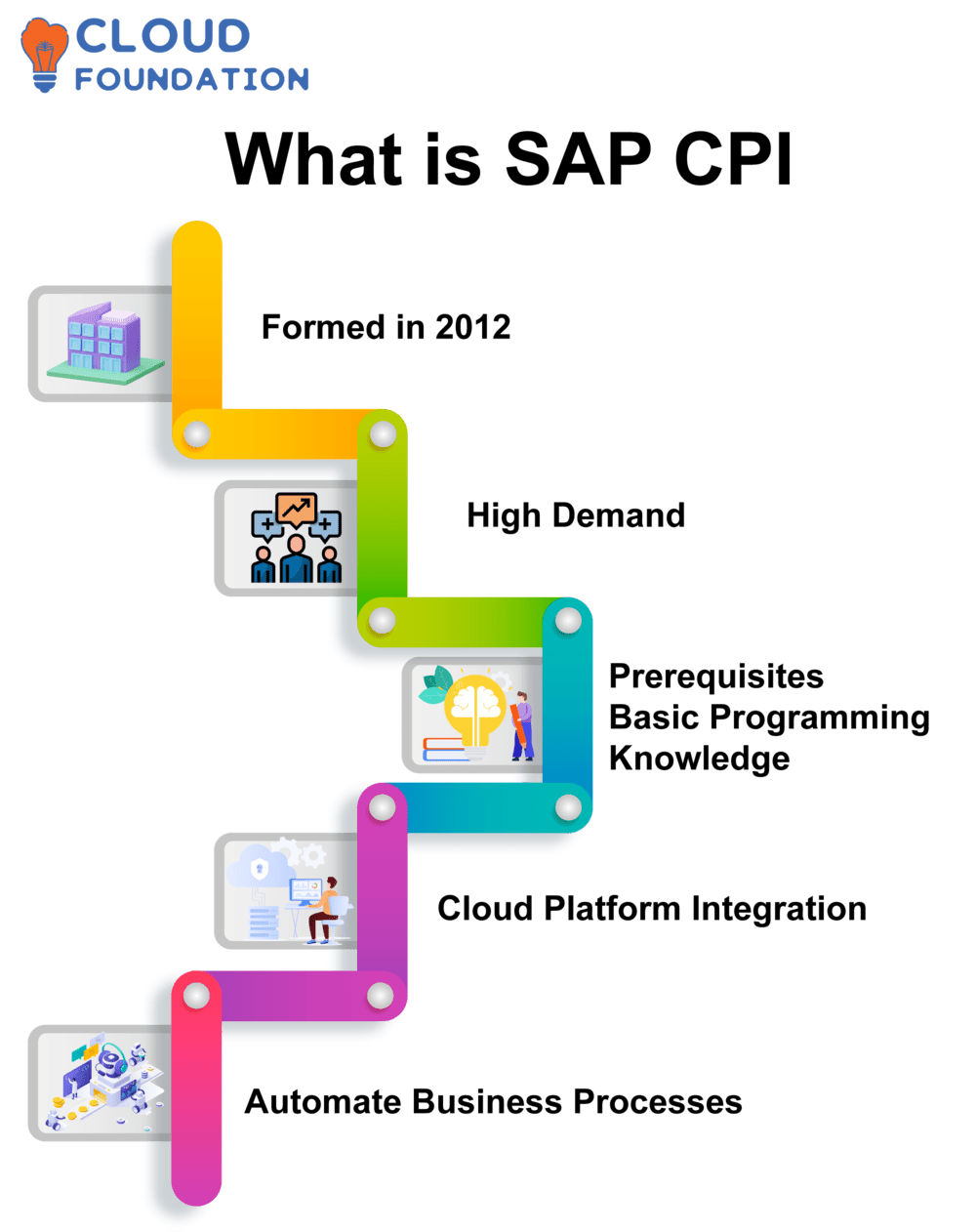What is SAP CPI (Cloud Platform Integration)
As digitization becomes the norm, organizations need to be agile enough to adapt to new technologies while maintaining a competitive edge. SAP CPI technology is required to remain competitive in today’s dynamic economy. Let us get into the detail of the technology here in this blog. Let’s get started with defining SAP CPI.
SAP CPI tutorial: Overview, Introduction to SAP CPI
What is SAP CPI Integration?
SAP CPI (Cloud Platform Integration) platform integrates cloud services and offers various cloud application services.
Enterprise data integration between cloud, on-premise, and mobile applications is possible using SAP CPI; by consolidating, processing, and publishing data quickly and safely.
What is SAP CPI used for?

It is a framework for integrating disparate systems and resources. Businesses can exchange and analyse data faster with on-premises and cloud resources.
This technology may greatly simplify integrating several systems thanks to its many useful characteristics, such as improved scalability and simple access to data from across different systems.
SAP CPI provides one comprehensive platform with unparalleled flexibility to process, publish and synchronize.
Users that utilize SAP CPI have the freedom to manage both batch and real-time operations while seamlessly integrating a range of programs and services into their operations.
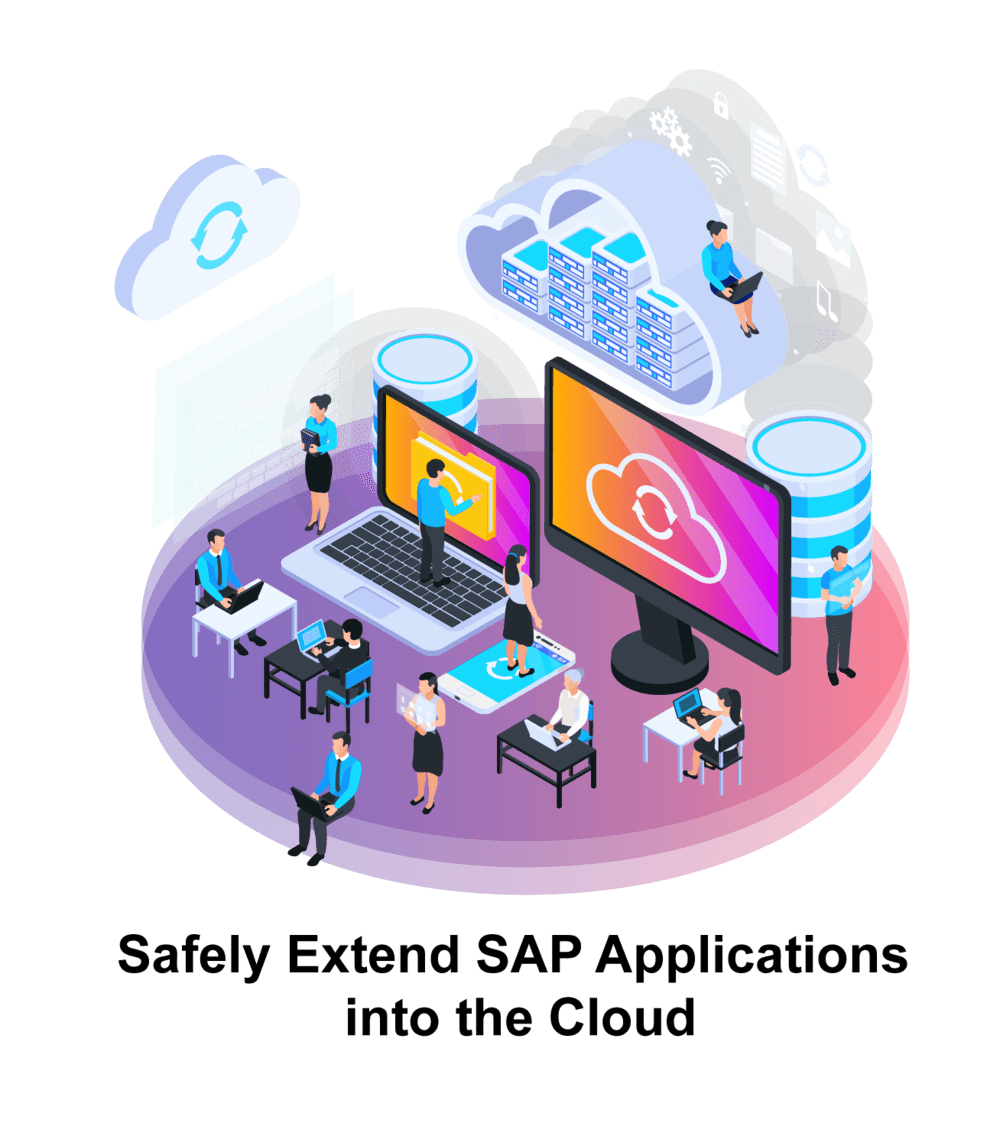
Furthermore, using this platform enables users to safely extend SAP applications into the cloud, allowing users to securely integrate data within their SAP systems and external ones without fear of security or privacy concerns being breached.
SAP CPI comes equipped with pre-configured adapters such as WS-Trust, EDIFACT, WS-Security, and WS-Reliable communications adapted to suit a range of goods or services; developers may leverage CPI’s Webhooks or API-Integration features for seamless integration.
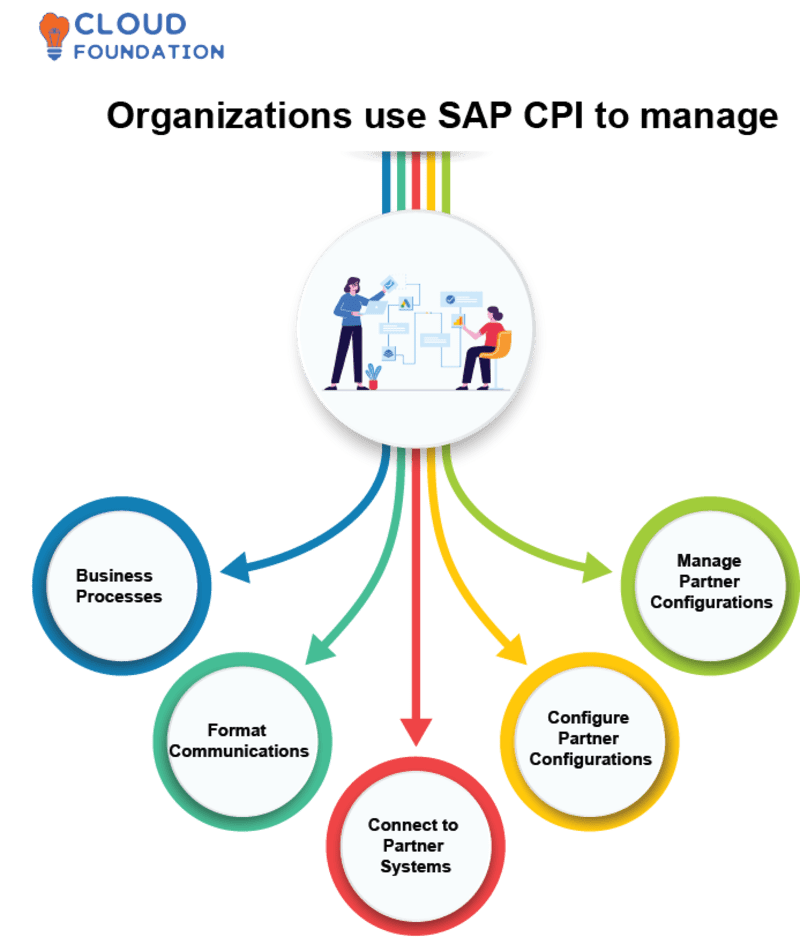
Organizations may use SAP CPI to manage business processes, format communications, connect to partner systems, configure partner configurations, and more efficiently manage partner configurations.
Customers may connect using various protocols including FTP/SFTP/SFTP/S/HTTPS/Web Services via T-codes/IDocs etc.
By creating an interface between on-premise and cloud apps, businesses can better communicate with clients, partners, and suppliers alike.
SAP CPI definition OR Define SAP CPI

With SAP Cloud Platform Integration (CPI), users can securely integrate apps, data sources, APIs, and devices across cloud and on-premise settings using its user-friendly environment for developing flow applications using graphic tools as well as its library of pre-made content APIs and monitoring and reporting mechanisms – helping organizations digitize business processes quickly and safely.
What is content modifier in SAP CPI?
Content Modifier is essential to SAP CPI. Both incoming and outgoing communications’ data structures and contents are modifiable.
Before an event message is processed or forwarded to a different destination, you can update or add new values to specific fields, such as headers. This is beneficial for converting messages between other formats.
What does SAP CPI do, and what is SAP CPI used for?
SAP CPI provides businesses with tools and wizards for securely connecting apps, services, and systems, such as apps from different vendors, into an ecosystem.
The flexibility and scalability of this platform are ensured through open-sourced JSON, SWIFT, and OData standards that enable it to access various data sources.
Businesses may repurpose integration procedures or laws as expedient ways of speeding development.
With our platform’s comprehensive library of templates, connectors, and integration components allowing teams to establish connections without programming or writing their own processes rapidly, teams can rapidly establish relationships without delay and use pre-built functions without code. In addition, its intuitive user interface (UI) ensures maximum efficiency for non-developers.
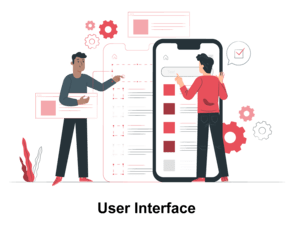
SAP CPI provides an efficient and user-friendly integration platform that reduces integration costs and complexity by quickly connecting applications, services, and systems while guaranteeing data security and consistency across platforms.
In addition, centralizing and automating integration processes helps accelerate development timeframes while decreasing time to market for projects.
SAP CPI USED FOR
SAP Cloud Platform Integration (CPI), previously HCI (HANA Cloud Integration), offers integration tools and services within SAP’s cloud environment.
CPI sets up, configures, and manages integration procedures within cloud integration procedures enabling integration across local cloud and on-premise applications as well as transversally connecting users between them across platforms.
SAP CPI can reduce integration costs, speed up integration processes, and offer cloud-enabled services. An Integration Content Library, development tools, and sophisticated security are also provided with CPI.
SAP HANA, SAP Cloud Platform, and third-party systems and services are connected via CPI. As an integration platform, it helps users to:
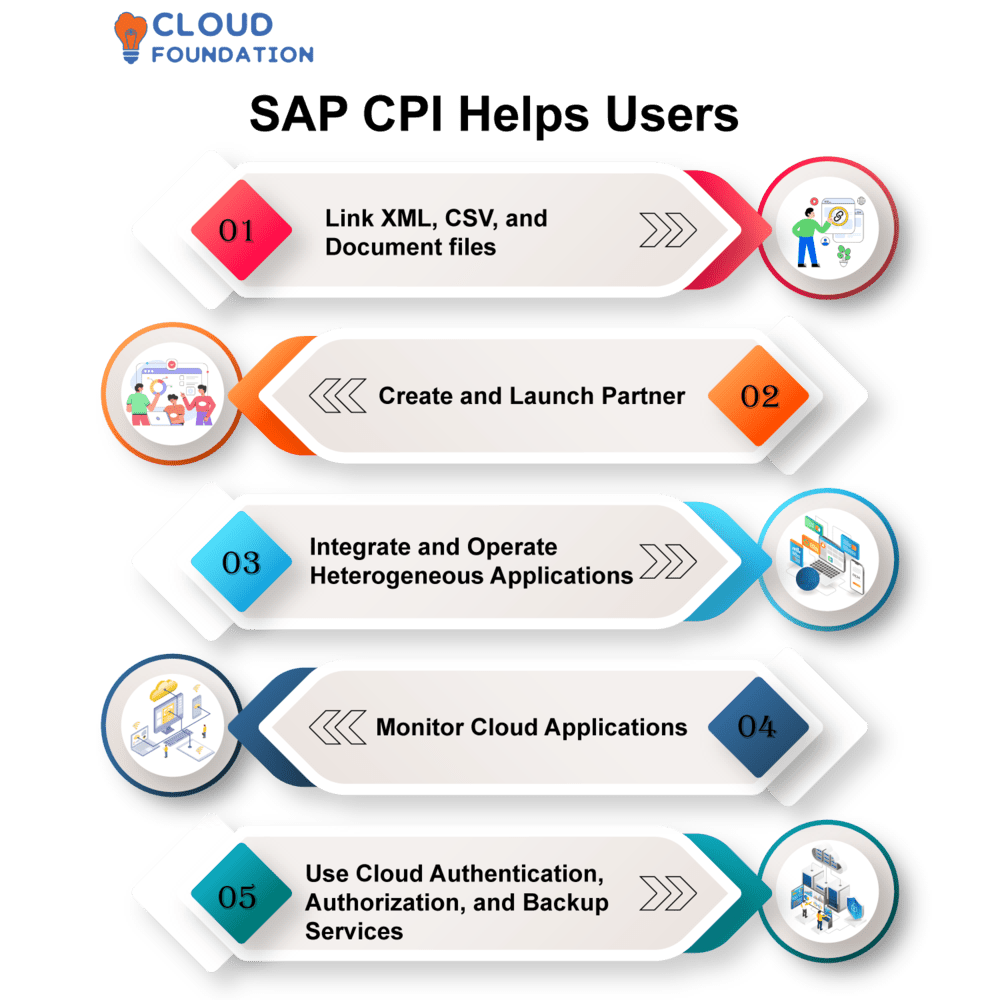
Link XML, CSV, and document files.
Create and launch partner- and customer-facing apps.
Integrate and operate heterogeneous applications.
Monitor cloud applications’ end-to-end communication.
Use cloud authentication, authorization, and backup services.
Users can create API-based connectivity across SAP systems while protecting these connections using an integration platform. It further optimizes API calls with features such as message transformation, token management, and end-to-end tracing to improve call quality and reduce costs for callers.
How does SAP CPI work?

SAP CPI provides data transmission and process automation through layer services-oriented design that underlies its Platform.
Developers can quickly integrate components with each other using point-and-click visual tools or by manually coding their configuration using components, making integration fast.
The components are simple to use but powerful. Developers can construct and manage integrations according to project and control needs at multiple layers, using drag-and-drop console features in the Services Administration Console to establish data objects and services at their base level and reuse these in subsequent technologies that integrate external services.
Top-layer developers can leverage scripting and graphical tools to design complex integration processes between numerous external systems.
These solutions let firms integrate systems using business rules while standardizing data flows.
Developers may customize integrations without writing code using these visual tools, while companies use secure cloud environments for swiftly deploying integrations after testing; real-time monitoring and management allows companies to efficiently deploy integrations more rapidly than before.
Why SAP CPI, and what are the benefits of SAP CPI?
SAP CPI simplifies businesses by eliminating the need to install and manage integration software by acting as a Cloud-based Integration Platform.
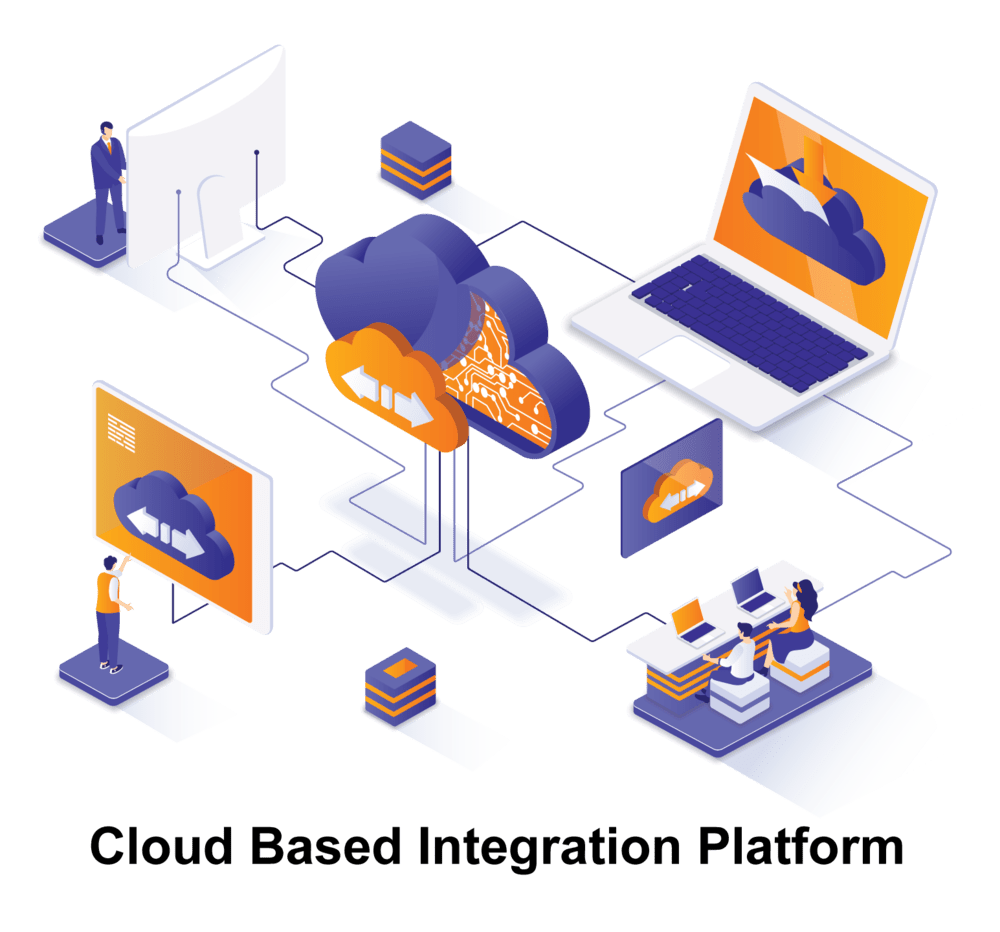
Not only can businesses save both time and money with this approach, but using the platform also enables them to keep abreast of new developments or improvements as soon as they arise – not to mention quickly adding customers or suppliers when operational procedures change rapidly.
Organizations no longer need to manually integrate multiple systems thanks to SAP CPI’s integration features, alleviating both time and burden associated with data integration processes.
By automating connections across applications, organizations may move data efficiently from system to system using SAP CPI for greater automation-based efficiency.
Organizations may transport data between systems safely and reliably with SAP CPI’s secure environment for data transmission.
With end-to-end encryption capabilities to safeguard privacy and ensure data safety, as well as capabilities such as compression that reduce time and resources required in data transfers between computers, SAP CPI provides organizations with a dependable means for transporting their information across systems securely.
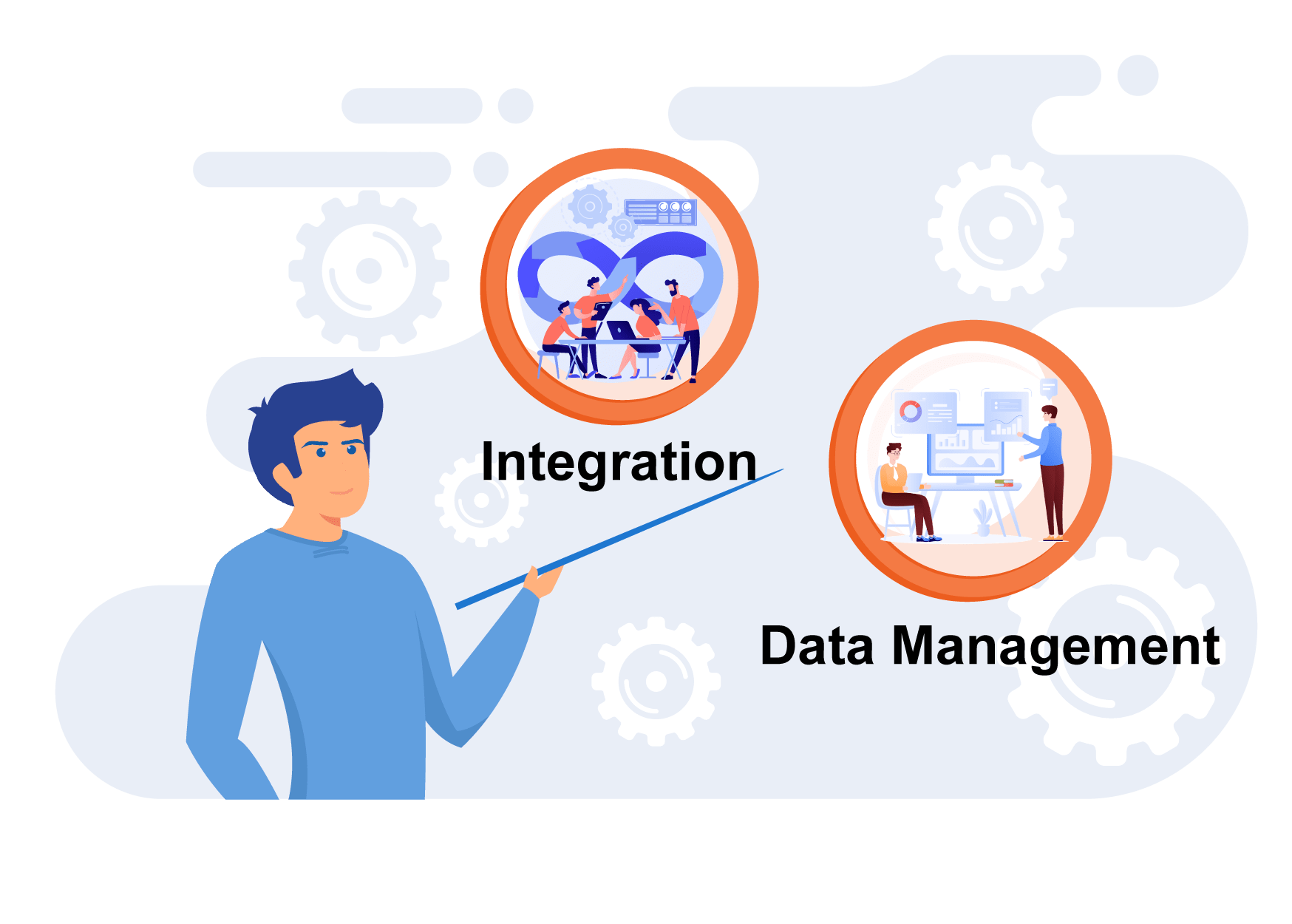
It simplifies data management and integration by offering an efficient platform with safe storage capabilities – offering businesses of any kind the power they need to fulfill their data integration requirements in an easier fashion.
The solution aims to assist companies in improving the customer experience, driving faster innovation, increasing agility, and spurring faster corporate growth.
SAP CPI can bring numerous advantages, with its main ones including fast and secure integration between cloud and on-premise systems, increased flexibility, and agility being top among them.
Benefits of SAP CPI

Complete Control: SAP Cloud Platform Integration provides complete control over the integration process for system deployment. With cloud-based customisation options and its ability to enhance security, scalability and dependability; users have full command over creating their integration workflow to increase security, scalability and dependability of integration processes.
Speed of Deployment: SAP CPI offers significantly faster deployment compared to traditional on-premise systems and provides a framework for rapidly linking apps and controlling data flow between them.
Security and Accessibility: SAP CPI offers improved security and accessibility by employing authentication techniques for data sharing, as its design prioritizes scalability, privacy, and data security.
Financial Benefits: Cloud integration reduces expenses related to maintaining on-premise server IT infrastructure, along with maintenance expenses that decrease. Another perk of this platform is reduced maintenance expenses.
Increased Agility: Cloud technology enables businesses to sell customer-centric goods and services more rapidly. Businesses may quickly adapt to shifting client requirements and market forces by utilising SAP CPI.
Successful client experiences and faster innovation rely on successful integration solutions. IntegrityHubTM is an advanced platform which empowers businesses to better manage their data and cloud-based operations, and thus provide unparalleled benefits to clients.
Advantages of SAP CPI
The following are the several advantages of SAP CPI:
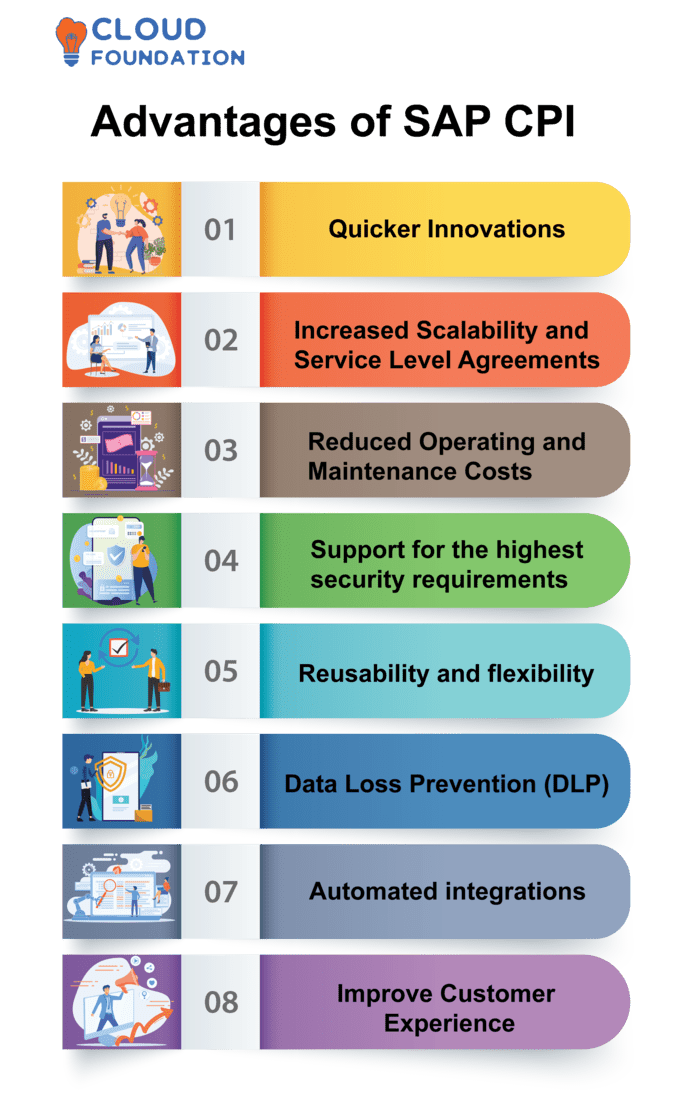
Quicker Innovations: SAP CPI provides an innovative cloud platform to speed app innovation, development and adaptation.
Increased Scalability and Service Level Agreements: With SAP CPI’s ability to support multiple scale levels simultaneously to address fluctuating IT demands quickly, businesses can create solutions more rapidly.
Reduced Operating and Maintenance Costs: SAP CPI helps minimise operational expenses by offering cloud services on its platform, cutting human labor, and simplifying integration procedures.
Support for the highest security requirements and tools for compliance-related assurance are provided by SAP CPI.
Reusability and flexibility are offered via an ecosystem of prebuilt templates, adapters and interfaces designed specifically to ease implementation times and accelerate deployment cycles.
Data Loss Prevention (DLP): SAP CPI provides solutions that quickly detect and notify users of possible data breaches.
Automated integrations ensure accuracy by eliminating manual processes altogether while guaranteeing smooth processes.
Improve Customer Experience: SAP CPI automates back-office procedures to enhance client experiences, such as automated invoicing or payment processing, while simplifying back-end administration tasks.
What is SAP CPI software and how to use SAP CPI
CPI can help a company create new clouds quickly and integrate existing ones efficiently, offering both cloud integration and API administration benefits in one bundled solution.
Businesses use SAP CPI in various ways –
Connecting disparate systems together,
Automating tedious tasks,
Restricting user access and tracking transactions
These are just some of its many uses – as well as managing various flows within legacy systems, developing both existing applications as well as developing web-based administrative panels or mobile apps using it – with many taking advantage of SAP CPI as part of their digital strategy.
SAP CPI modules
The SAP Cloud Platform Integration (CPI) consists of the following modules:
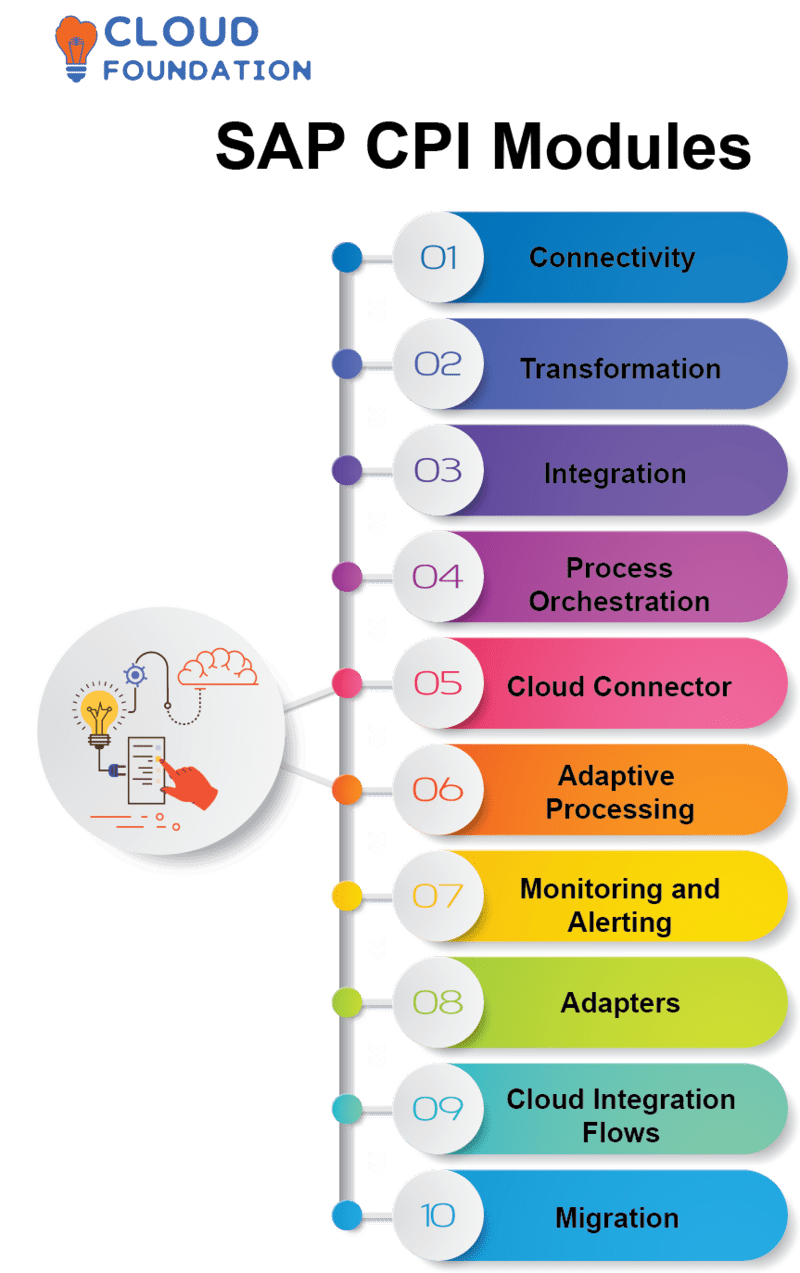
Connectivity
Transformation
Integration
Process Orchestration
Cloud Connector
Adaptive Processing
Monitoring and Alerting
Adapters
Cloud Integration Flows
Migration
What are the best ways to learn SAP CPI?
Enrolling in an introduction course is the best way for anyone who wants to start studying SAP CPI to become familiar with its concepts and terminology. They will immediately gain a firm understanding of it by interacting with one!
Practise developing SAP CPI jobs and investigating their features and possibilities after that. Utilise any manuals or tutorials that are available.
Finally, it’s a good idea to register with an e-learning site so you may get advice from experienced SAP CPI users.
To aid with this quest, CloudFoundation, one of the top e-learning platforms for SAP CPI learning, should be taken into consideration.
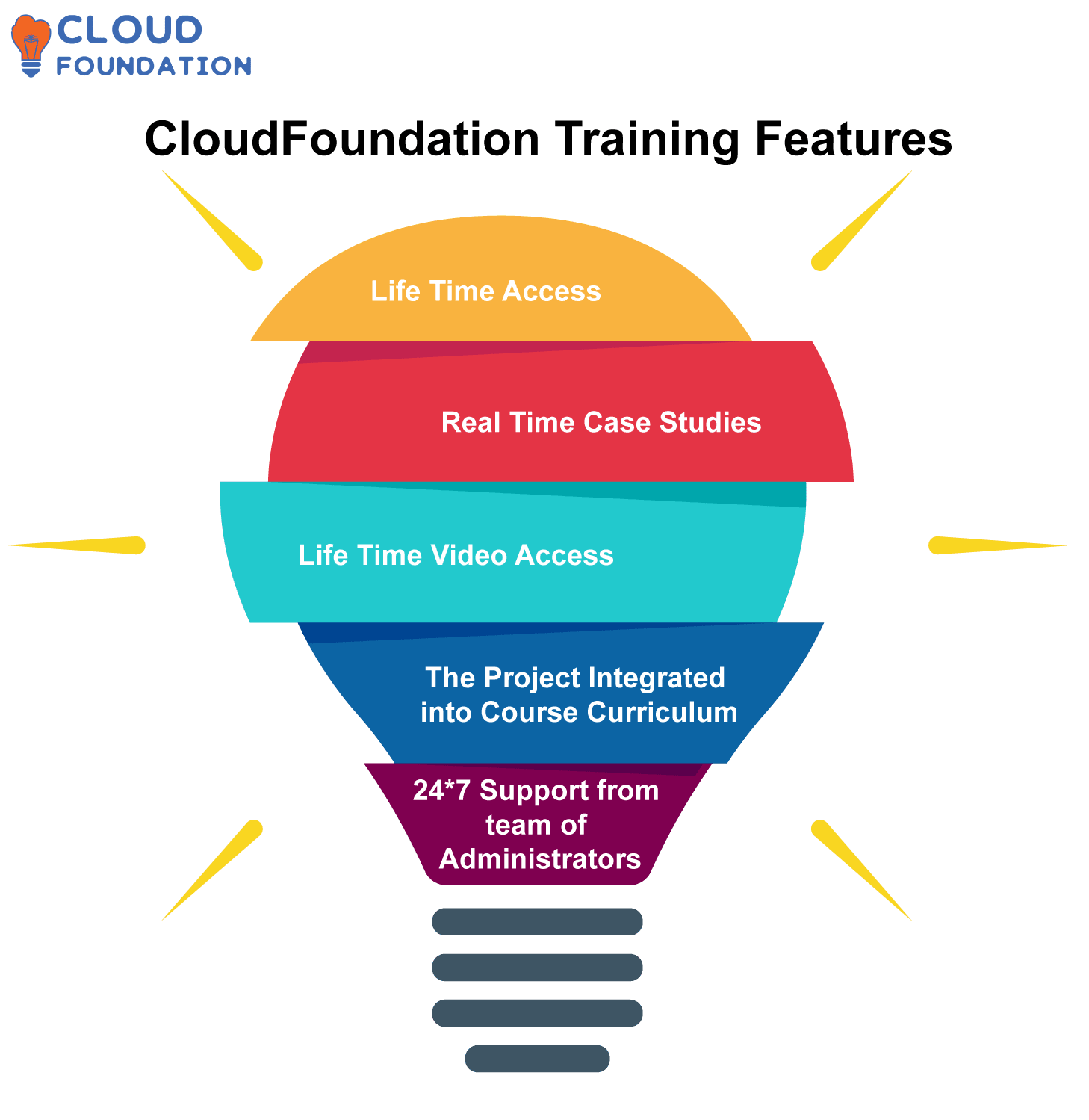
Due to their unique learning options, including self-paced training and instructor-led live training, and their use of industry-leading training specialists with five or more years of experience in technology and real-world projects, they distinguished themselves as one of the top training companies.
Enrol with them to have access to SAP CPI Training videos, SAP CPI documents and pdfs, and educational SAP CPI Course content.

Akhila
Author

